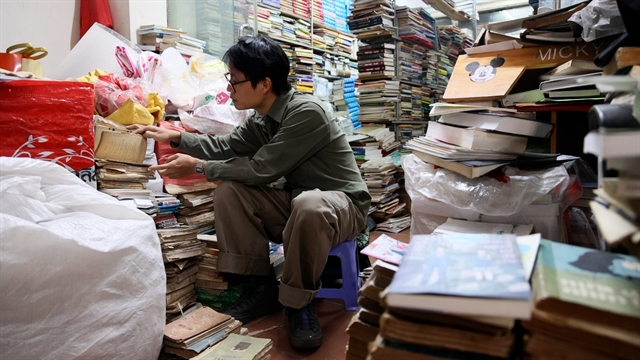
.jpg)
|
| Banking staff visiting a farming household. Improving access to financial services will increase labour productivity, diversify livelihoods and increase resilience to adverse shocks. — Photo courtesy of LienVietPostBank |
By Vũ Hoa
HÀ NỘI — Agriculture is emerging as a vital platform to help the economy cope with the effects of the COVID-19 pandemic. Investing in agriculture with preferential credit for this sector could be an important step towards economic recovery, creating a sustainable source of income for farmers and credit institutions.
From the perspective of people who borrow money and invest in agriculture, agricultural credit helps change the rural economy day by day.
On the island communes and districts of southern Khánh Hoà Province, thanks to agricultural credit, many fishermen are no longer dependent on long sea trips as their sole source of income, which brings with it risks from bad weather conditions or poor yields.
Aqua-culture households, like Đỗ Thị Thanh's family currently living on Bình Ba Tây Island, Cam Bình Commune, Cam Ranh District, have sought bank loans to invest in blue lobster farming.
With a capital of nearly VNĐ300 million borrowed from LienVietPostBank, mortgaged with her real estate on the island, Thanh's family initially invested in ten green lobster cages. After two years her family, from a near-poor household, escaped poverty and now have a stable income. They have even built a new house.
Before accessing capital up to hundreds of millions Vietnamese đồng, her family had borrowed money from some financial institutions but the capital was modest, at only a few tens of millions Vietnamese đồng per household. There was also long disbursement times. She then borrowed at commercial banks with a higher amount and quick and simple procedures.
“In the past, I had to work as a hired worker for shrimp farms on the island, now I have my own farm with 25 cages of more than 7,500 blue lobster. The output is about 2.5 tonnes. With this harvest, I will pay off all my debt to LienVietPostBank and already have a large amount of capital to continue investing.”
In the context of an economy struggling due to the recent pandemics, the agriculture, forestry and fishery sector has emerged as a bright spot in the three main economic pillars, including agriculture, industry and construction - service. This sector recorded a positive growth rate of 1.04 per cent despite the gloomy GDP picture in the third quarter of the year, which was estimated to have decreased by 6.17 per cent compared to the same period in 2020, according to the latest data of the General Statistics Office (GSO).
The resilience of the agriculture, forestry and fishery sector can be explained by the fact that this sector plays a key role in protecting food supplies for the whole society under any circumstances. In addition, this is also an area that recorded a strong investment shift when the pandemic broke out last year.
GSO’s statistics showed that the number of newly-established enterprises in the sector by the end of 2020 increased by 30.1 per cent, with capital and number of employees up by 54.9 and 50.5 per cent compared to 2019 respectively. GSO said this situation reflected that businesses have gradually adapted to the 'new normal' when moving from industries heavily affected by the pandemic to those with less risk.
Figures also revealed that the number of employees in the agriculture sector tended to increase in the third quarter of 2021, in contrast to the decrease in the number of employees in the industry and construction and service sectors. The main reason was that workers who lost their jobs in the southern provinces returned to their localities to work in the agricultural industry.
According to the International Fund for Agricultural Development (IFAD), economic growth in the agriculture sector is 2-3 times more effective in reducing poverty and avoiding food insecurity than growth in others.
Investing in small-scale agriculture could help restore food production and job creation after the crisis while allowing rural communities to recover, IFAD said.
In Việt Nam, agriculture is one of the priority areas for development with many policies to support capital sources for agricultural and rural development.
Some domestic banks such as Agribank, BIDV and LienVietPostBank have devoted great resources to exploiting the agricultural credit segment, becoming the leading banks in providing capital for this field in Việt Nam.
The agriculture credit is also a professional segment that helps many banks consolidate a stable source of income and have a high-risk tolerance.
A representative from LienVietPostBank told Việt Nam News that the proportion of agricultural and rural credit contributes a significant part to their loan structure and annual revenue.
“This proportion was increased from 22 to 32 per cent in 2020, with the total outstanding loans in this field reaching approximately VNĐ57 trillion. Bad debt in the agriculture sector was only one per cent thanks to the risk dispersion through small loans, closely monitoring business activities and customers’ income. In addition, bad debt from unsecured lending products through the loan association model was also quite low thanks to the cross-supervision of production, business and debt repayment activities of the participating members such as women and farmers unions,” he said.
Assessing the sustainability of agriculture lending, he said that thanks to the small nature of the loans, as well as small or micro-business production being easy to adapt to economic fluctuations or the COVID-19’s impact, the borrower's ability to repay debts in this area is often higher than in others.
“Lending to agriculture and rural areas will continue to be the orientation of LienVietPostBank in the coming years. With the untapped potential of the agriculture sector, or rural areas in general, the bank will increase its presence, reaching every commune in the country to access agriculture capital from the bank. This will help improve the economy and get rich in the homeland,” he added.
Promote financial inclusion in rural areas
Nguyễn Kim Anh, Deputy Governor of the State Bank of Việt Nam (SBV), said the central bank has submitted many credit policies for agricultural and rural development to the Government. It has always identified agricultural and rural credit as one of the five priority areas.
Anh said credit institutions have focused on capital investment, favourable mechanisms in terms of procedures, conditions and interest rates for customers in agricultural and rural areas. Việt Nam's banking system plays an important role in providing credit, effectively supporting farming enterprises in many forms such as product and service packages for farmers to purchase, process and export food.
“The agriculture and rural areas always have special significance in the process of industrialisation and modernisation of the country. Therefore, in order to develop this field sustainably in the coming time, it is necessary to have a system of comprehensive solutions, from formulating macro-management policies to socio-economic, human resource development. Financial inclusion is considered as one of the key pillars,” he added.
Nguyễn Thanh Phương, head of the Finance Faculty, Banking Academy said that the financial products and services for the agricultural and rural areas have been continuously developed in both traditional and modern channels, from the system of commercial banks, people's credit funds, non-banking credit institutions and Fintech.
She said the products and services have been innovated and diversified, catching up with the most advanced scientific and technological developments. The quality of financial services is increasingly improved thanks to modern technology, increasing convenience for users while reducing transaction costs.
“As a result, rural areas are being increasingly focused and exploited, bringing harmonious economic benefits to both service providers and customers, contributing to economic development in the areas and creating a premise for sustainable economic development on a national scale,” she added.
Improving access to financial services will increase labour productivity, diversify livelihoods and help farmers increase resilience to adverse shocks, as well helping avoid poverty traps.
However, experts said promoting comprehensive inclusion in the agricultural and rural areas still has its limitations because banking service providers are still concentrated in urban areas. In rural areas, the use of modern channels is still limited. Farmers are still unfamiliar with non-cash transaction methods while the risk prevention and remediation mechanisms such as insurance in agriculture have not yet been developed.
In order to continue promoting financial inclusion towards sustainable development, experts believe that it is necessary to continue to implement solutions such as promoting the development of supply channel systems, products and services with unique characteristics, suitable to the needs of agricultural and rural areas.
In addition, the banking system needs to continue to proactively come up with new solutions to make practical contributions to the process of restructuring the agricultural and rural areas, such as applying modern technology to enhance the ability to banking and financial services associated with financial education solutions and formulating policies on protecting financial consumers. — VNS



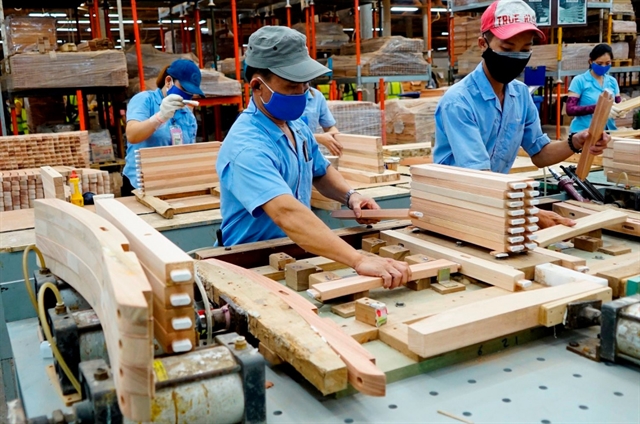
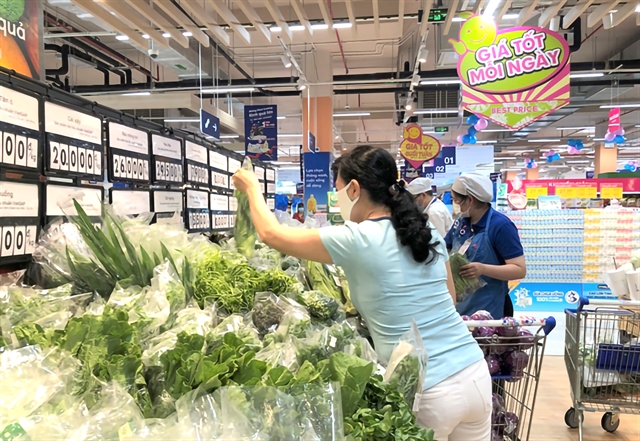

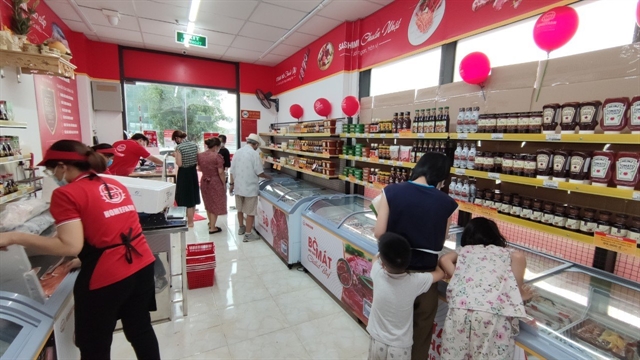
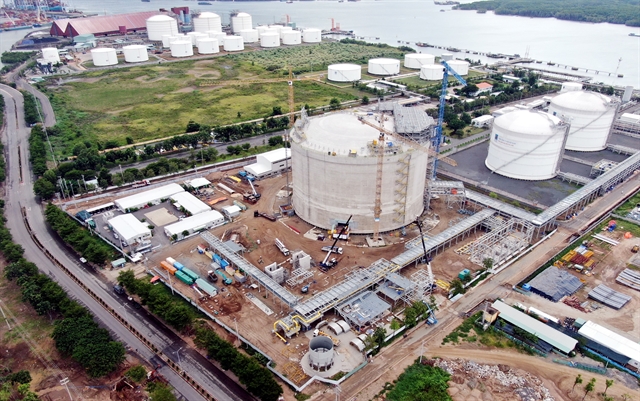




.jpg)



